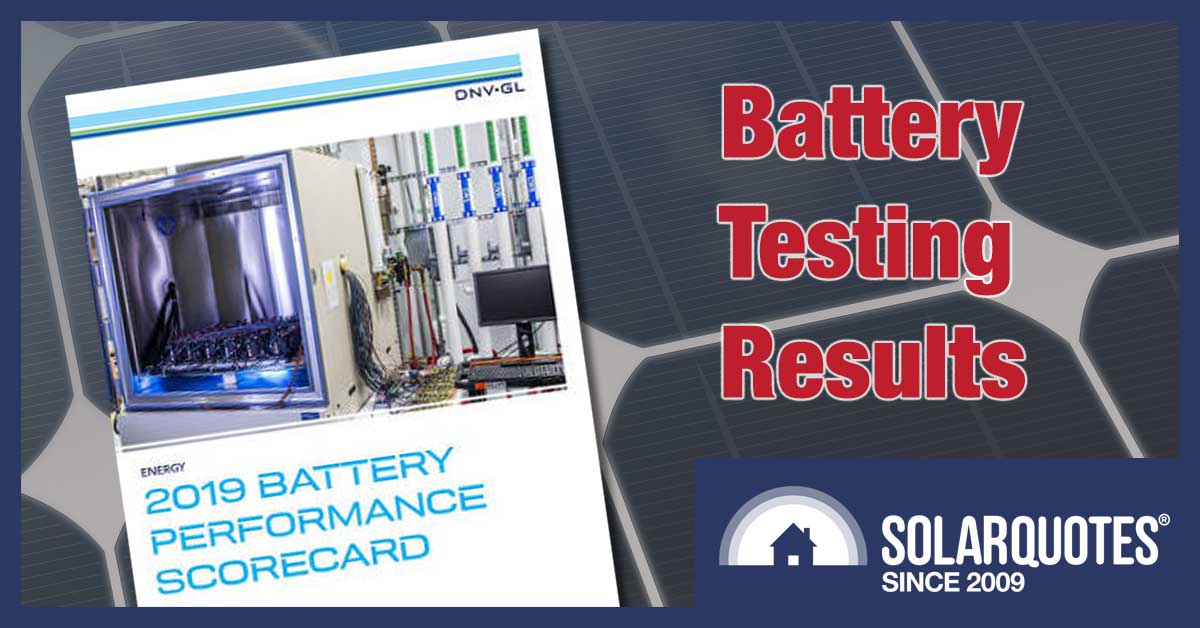
DNV-GL tested a whole lot of batteries to see how they really performed. Here’s what they discovered.
When it comes to battery technology the rate of change is hectic. Chemistries are constantly being tweaked and changed to improve battery performance and lifespan. They’re also getting cheaper at the rapid rate of around around 10% per year. This is similar to solar cells and if it keeps up, in 7 years packs of battery cells will cost half what they do now.
The rapid changes have left a lot of people confused. Not just household consumers but also the companies that buy battery cells to make items such as home solar energy storage, electric cars, or environmentally friendly concrete vibrators.
Lucky for us, the giant Norwegian standards company, DNVGL, is out there busting confusion in its chops like a champ. They have tested 16 different battery cells from various manufacturers and published the results in their 2019 Battery Performance Scorecard.
One way they’re making money with this report is by giving us test results but not telling us which manufacturers’ cells they are for. If you want that information you’ll have to pay for it and agree not to tell anyone else. Also, if you want your batteries tested you have to pay for the privilege. They haven’t tested a random sample of cells.
Despite not telling us who got what results, the Scorecard report still contains useful information on battery cells and how well they handle various kinds of abuse. So in this article I’ll summarize their test result information and I’ll also give a quick overview of what they say on battery safety. If you want all the details you can download the full report from this page.
But first I’ll look at some battery trivia they provide in their introduction that made me wonder what the authors were smoking – because it’s so inaccurate it may as well have been written by an Imperial Stormtrooper.
The World Is Going Big On Batteries — But Not That Big!
The report gives some information on Global Storage Markets, but I don’t know how much effort they put into it because they state:
I think Norway needs to get its internet pipe cleaned because clearly by the time the ones and zeros reach them from Australia they’re full of rubbish. Residential battery sales in Australia have been abysmal compared to the endless over-optimistic estimates we received, which mostly came from self serving battery sales people. When South Australia, the state with the highest electricity prices, has a home solar battery subsidy of up to $6,000 and the take up is a tiny fraction of expectations that’s not a strong market.
While home solar battery systems are falling in price and, in South Australia at least, Virtual Power Plants are starting to offer interesting deals, what they should have instead written in the interests of accuracy is:
“Unlike most places, in Australia a market for residential energy storage exists.”
While home solar batteries have been slow to take off here because they don’t make financial sense for normal families (at the moment), if what DNVGL writes about the rest of the world is correct then the battery storage business is about to boom. They state:
“…the United States alone is poised to witness 270+ GWh of energy storage markets opening in 2020.”
Wow! That 270+ gigawatt-hour figure is massive! But while a casual reader looking at that sentence might think it means there will be that much battery storage in the US next year, it won’t be anywhere close. The US Energy Information Administration (EIA) says there will be under 2.5 gigawatt-hours of utility scale battery storage in the US in 2021. Even if we add in all the portable storage in 1.6 million electric cars, and all devices such as laptops, mobile phones, and hand-held concrete vibrators, there will only be a total of around 10 or so gigawatt-hours next year.
All they are really saying is at some unspecified point in the future there will be a giga-shitload of battery storage in the United States. But instead of stating it like staid and boring Norwegians, they acted like battery spruikers instead. If they had simply stated:
“Total US battery capacity is increasing rapidly and we predict it will exceed 10 gigawatt-hours in 2020.”
I would have forgiven them for their Australia gaffe, since we all make mistakes, and wouldn’t be wondering if I have to double check everything in the report. This section on global energy markets reads like it was written by an American company rather than a Norwegian one. But there might be an explanation for that…
Battery Cells Tested In Rochester, New York
While DNVGL headquarters are in Norway, it’s a global company and the battery cell testing occurred in New York State’s city of Rochester. It’s one of the worst cities in the US but it’s only about the 34th worst, so it’s not even good at being bad. No one likes the mediocre. They need to either pull up their socks and become a decent city or refuse to change their socks for months at a time and bust into the list of top 5 worst cities in America.
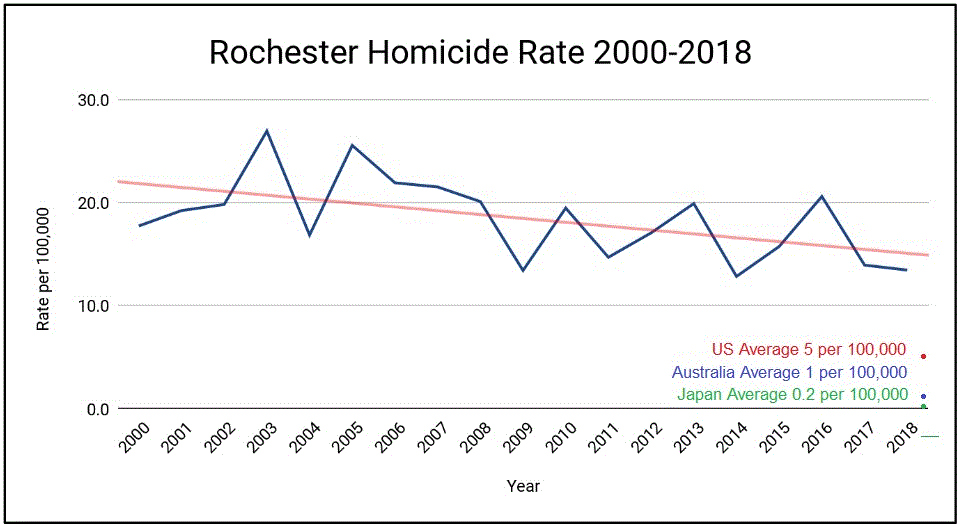
What the hell, Rochester! You can’t solve every problem by popping a cap in someone’s ass with your gat.
They are, unfortunately, a bit fond of the old ultraviolence in Rochester, as the above graph shows.1 But oddly enough, from the air, Rochester looks a bit like Adelaide.2
Tested Battery Cell Types
Fortunately, the team in Rochester managed to somehow survive long enough to test 16 battery cells that were made with 5 different basic chemistries. Fifteen were lithium based while one was a mystery chemistry simply described as “non-lion”. (So, like a tiger then?)
I’ve quickly noted some characteristics of the different chemistries below, along with how many of that type were tested:
- Non-Lion: 1 tested. Who knows? We’re given no information so it could be the Force in a can.
- NCA: 1 tested. Lithium Nickel Cobalt Aluminum Oxide. High performance cells. Used by Tesla and others for electric cars.
- Titanate: 1 tested. Lithium Titanate. Apparently a long life chemistry as the Australian company Zenaji use it in their new residential battery that has a 20 year warranty.
- LiFePO4: 5 tested. Lithium Iron Phosphate or just lithium iron for short. The easiest lithium chemistry to use as it is the most tolerant of poor battery management. Main uses are home and business battery storage and many Chinese domestic electric cars. (These lack the performance we foreigners expect from EVs.)
- NCM (Also called NMC): 8 tested. Lithium Nickel Manganese Cobalt oxide. High performance similar to NCA but requires less cobalt, which is considered a plus due to expense and concerns about reliability of supply. It has recently become a popular chemistry among Chinese manufacturers.
Half the battery cells were the NCM type, which indicates how rapidly battery technology is changing as they were uncommon three years ago. But this doesn’t mean half of battery cells are now NCM as new ones are more likely to be submitted for testing than old ones.
Much to my chagrin, because we don’t know which battery cells go with which results, we can’t compare the performance of the different chemistries.
Types Of Battery Abuse
The testing involved inflicting millions of hours of abuse upon the battery cells. Fortunately, most of these hours were done side by side. If they couldn’t do this, instead of being the 2019 Battery Scorecard, it would have been the 2525 Battery Scorecard. The tests investigated:
- Operating temperature — Best and worst.
- State of Charge — The amount of energy in the battery as a percentage of its maximum amount. The best ranges were examined.
- Optimal C Rate — The power output at which the battery cell operates best.
- Maximum Throughput — How much stored energy the battery cells can provide by the time they’ve degraded to 90% of original capacity.
Temperature — Some Like It Hot
One massive rule of thumb for lithium batteries is they don’t like it hot. Higher temperatures result in faster degradation — or at least it normally does.
DNV-GL found that:
- fourteen of the sixteen batteries performed best at 25ºC,
- one performed best at 45ºC
- one performed best at 40ºC.
Because one tested battery was non-lithium we can’t know if there were two hot lithium freaks or just one. But the fact there is at least one lithium battery cell out there that operates well at high temperatures is good news for Australians and the bulk of the world’s population, as most of humanity lives where it’s warm.
Twelve suffered their worst operation at 0-10ºC. Four were worst at 40-50ºC.
State Of Charge
Lithium batteries have an optimal range for their state of charge (SOC) where they will suffer less degradation. The range can differ significantly between cells. The report has graphs showing the optimum and least optimum ranges. I’m not going to go into these because I couldn’t find an explanation in the report on why they can overlap. I’m pretty thick, so maybe there’s one and I missed it, but I don’t think I’m that thick.3 If you are not as thick as me, please read that bit of the report and let me know what’s going on via the comments.
Optimal C-Rate
The best performing C-Rate is how much power a battery can output while suffering only minor deterioration. The higher the optimal C-rate, the higher the battery power. Some home solar batteries will let you discharge them at a C-Rate of 1 which means they can go from full to flat in one hour, but this may not be the optimal rate. Most home battery systems have a C-Rate of 0.5 — two hours to go from full to flat — or less. As the graph below shows there’s a lot of variation in the best rate:
Maximum Throughput
The maximum throughput for testing purposes was how much stored energy the battery could provide before degrading to 90% of its original capacity. The numbers running down the left of the chart below show how many multiples of its original maximum capacity it can provide before reaching this point:
Doing well here is necessary if a home or business battery system is going to pay for itself and my guess is the best performers on the graph are lithium iron phosphate (LiFePO4). But this is only a guess, as it’s quite possible to make crappy lithium iron batteries.
Battery Safety — Are We Going To Die?
The report has a section on battery safety and reading it brought to mind the advice my uncle gave me on fishing with dynamite:
“You gotta know when to hold ’em. Know when to throw ’em. Know when to walk away. Know when to run. But if you don’t know… Run!”
Battery fires are rare but can be disastrous. A home solar battery with 14 kilowatt-hours of electricity storage can release over 500 kilowatt-hours of thermal energy when it burns. It will technically have more energy in it when fully charged, but this makes no practical difference if it catches on fire. Unless of course you electrocute yourself when trying to put it out.
Because of the risk, some people think home solar batteries should never be located in the home. Personally I think putting lithium batteries inside your home is as insane as parking a car with a full petrol tank in your garage or using a pipe full of pressurized flammable gas to cook your dinner. In other words, I’m okay with it provided the safety precautions are sufficient. After all, I shove a powerful lithium battery into my pants every morning soon after waking up4.
But if a home battery has demonstrated a high level of safety, such as Sonnen’s that have been used in Europe for years or a Tesla Powerwall 2 that has had its technology used in hundreds of thousands of electric cars with them mostly not catching fire, then I’d be fine with having them in my home. I would take fire risk into consideration when deciding where to locate them, but as the risk is small it’s not a deal breaker.
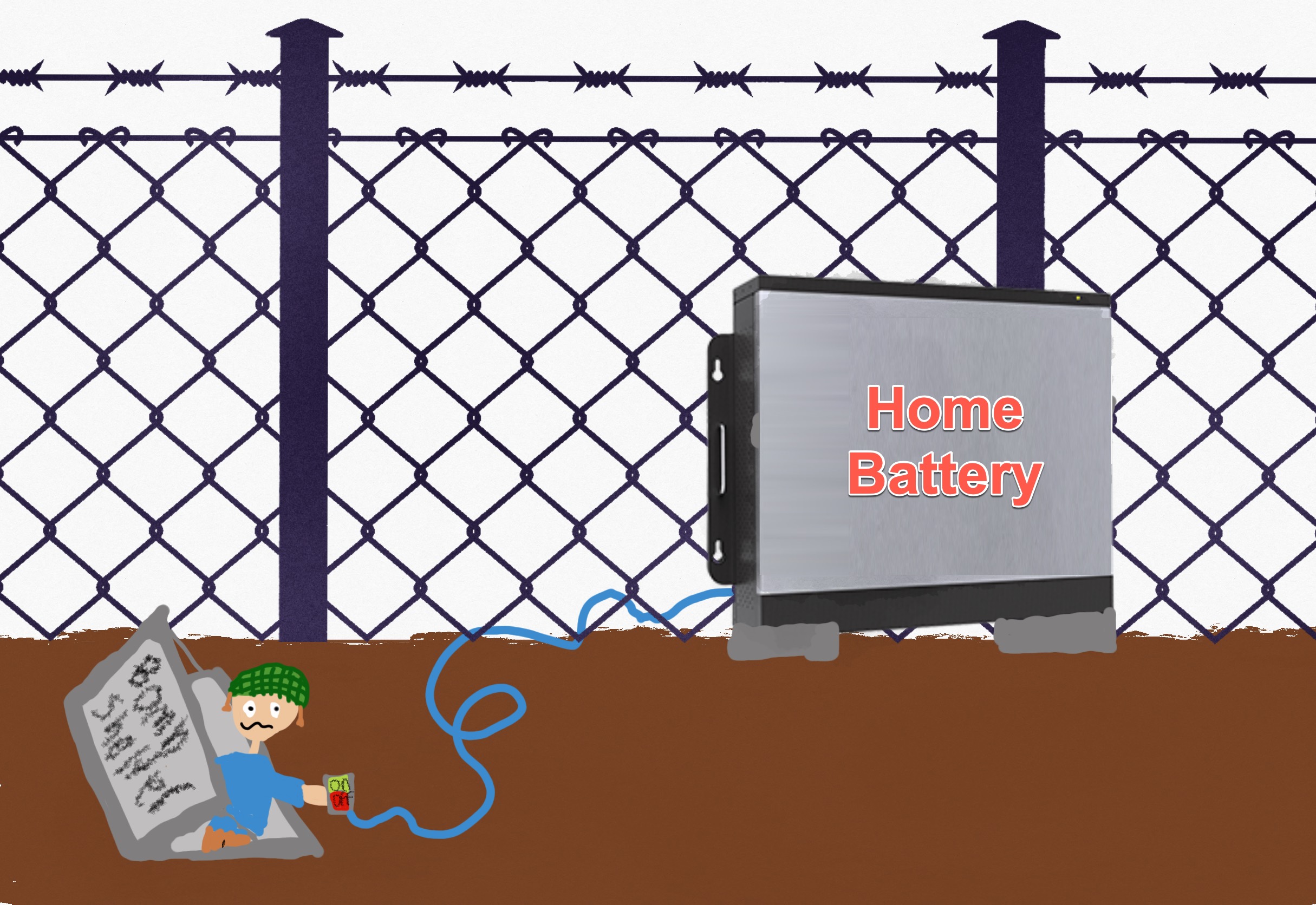
Image Credit: Emjay Peacock (age 12). Emjay has negotiated $10 per illustration – so expect to see plenty of his illustrations on the blog, at least until he has enough money for Plants v. Zombies 3.
There are batteries I wouldn’t locate in my house at the moment, either because they’re new and unproven or new and so cheap it makes me wonder if corners have been cut when it comes to safety. While I think the risk will be low for most battery systems sold in Australia, I’m not yet convinced the risk is low enough. But opinions differ and maybe you think it’s okay to install a cheap battery in your home. For example, you might run faster than I do.
I’m a little reluctant to give information from the report on battery safety in case it gives people the confidence to not run away when they catch on fire. Despite this, I’ll cover a couple of points they raise.
Water Is Good If It Doesn’t Kill You
The report says the most effective substance for fighting lithium battery fires is water.
I will mention that combining water and live electrical equipment can have shocking results. This is because ions in water allow it to conduct electricity or maybe it’s because electricity is an invisible evil genie cat that hates water and will kill you if it gets wet. Either one. So don’t use water unless you know what you are doing and, even if you know what you are doing, run away anyway. The exercise will do you good. Especially if the alternative is breathing toxic fumes.
If your house burns down because you ran away that’s unfortunate, but how expensive can they be these days? My parents paid $4,000 for their first house and surely improved technology would have lowered the cost by now.
Water is effective because it’s good at carrying away heat and can flow through narrow spaces in a battery pack. This cooling effect can prevent fires from spreading and hopefully prevent more battery cells from exploding. Unfortunately, if a battery pack is on fire it is likely that some battery cells will have already exploded and are likely to continue to do so if you approach it to try to put out the fire.
Note the whole battery pack is a write off after any sort of fire. It can’t be used again no matter how many battery cells didn’t explode.
Poisonous Gases May Kill Your Asses
The contents of a battery cell are mostly plastic. And what isn’t plastic can be still quite capable of burning or exploding if it happens to be confined in a tight space like the small metal cylinder of a typical battery cell. This is why good ventilation is extremely useful if there is a battery fire because burning plastic is a champion at emitting smoke and toxic gases.
The toxic gas produced in the greatest quantity will be carbon monoxide. This can cause you to pass out from oxygen deprivation and is flammable. Note your body cannot detect when it runs low on oxygen due to carbon monoxide poisoning so there will usually be no warning that you are about to lose consciousness. There are also plenty of other nasty gases that can be given off. I suppose the best thing that can be said is the smoke is likely to be so foul and painful to breathe that you’re not likely to hang around long enough to pass out from poison gas.
No Lithium Battery Chemistry Is “Safe”
The report states that, while lithium batteries differ in their characteristics, none can be considered intrinsically safe. It doesn’t matter how many videos a manufacturer shows of their cells being drilled or grilled or chilled or spilled onto the ground from a great height, they are all capable of catching fire under the wrong circumstances.
I explain this by saying the differences between lithium chemistries are like the differences between petrol and diesel. Diesel won’t explode in the way petrol does, but it’s not safe to have a Jerry can of either next to the fireplace or on top of the heater.
We only consider cars to be safe because a great deal of safety has been built into them. It’s the same for battery systems. While other lithium ion cells may be able to suffer more abuse than NCM cells without catching on fire, the real safety comes from the design and implementation of the overall battery system. Good design and engineering can make NCM cells far safer in practice than a poorly designed and shoddily assembled lithium ion system.
Batteries Are Safe As Houses — And Sometimes Houses Burn
While the information on fires and toxic gases may have put you off lithium batteries and possibly any kind of battery that’s not made of flame retardant or water, when good engineering practice is followed lithium batteries are are no more dangerous than using petrol in cars or natural gas for cooking. Provided you’ve done enough research to satisfy yourself that good engineering practice has been followed, and you take sensible precautions, like not buying the absolute cheapest battery available, there’s no need to be scared of new energy storage technology. So don’t be a battery chicken.
Footnotes
- The graph is from here but I added the national averages. ↩
- We may not be lining our homies in chalk here, but we do have some nice sandstones. ↩
- I may be so thick I lack the ability to comprehend my own thickness, but I can’t be super thick because I’ve never invested in Bitcoins — or Dunning-Krugerrands as the kids call them. ↩
- it’s my iPhone 6s, I leave the concrete vibrator in the drawer ↩


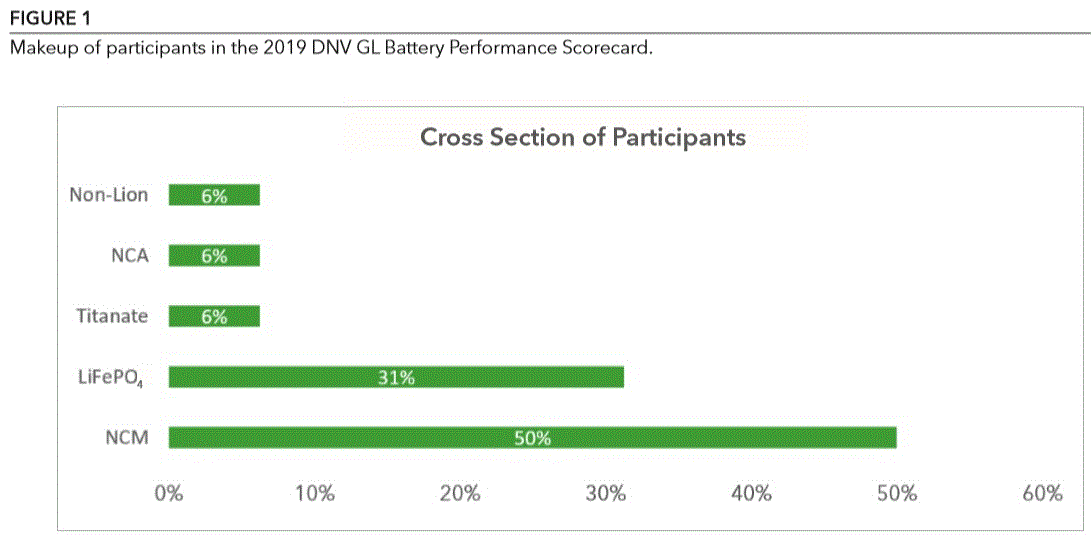
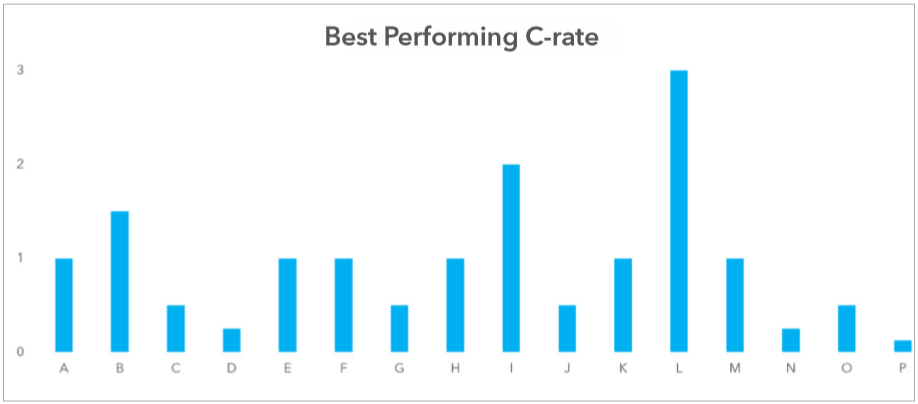
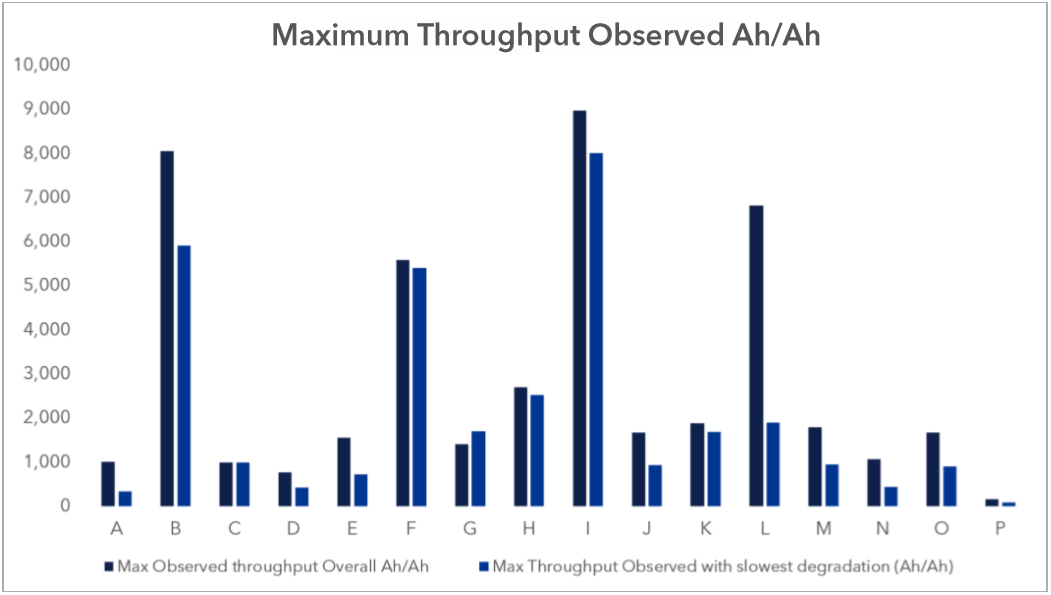
 RSS - Posts
RSS - Posts



??????… So… If the US shooting deaths average 5 per 100,000
and Auastralia averages only 1 per 100,000, and
The US has a population is about 13 times that of Australia’s, then……..
I
It’s per 100,000 people. So think of the US annual homicide rate as 0.000005 per capita and Australia’s as 0.000001 per capita. Also note when you get down to Japan’s homicide levels the figures can be strongly affected just by One Punch having a bad day.
I had a LG 6600 battery that was playing up after 3 yrs. it was beyond the Solar to resovlve unlesss I paid another $7,000. I had a computer ‘whiz kid’ come in and sort it all out?
Hi Rob
If your battery developed a fault while under warranty, whoever you bought it from has an obligation to provide a repair, a replacement, or a refund. You are not required to pay to in order to have it work as it is supposed to. (Under Australian consumer law this can still apply even if the written warranty period is over or the written warranty states it doesn’t cover the problem that has occurred.) If you are having problems getting a battery fixed that is under warranty I suggest contacting the consumer affairs office in your state or territory.
“you take sensible precautions, like not buying the absolute cheapest battery available, there’s no need to be scared of new energy storage technology.”
So, are you saying that less expensive batteries , like the BYD B-Box Pro 13.8, and the DCS PV 13.5, being the batteries with about the lowest Levelised Costs per Warranted KiloWatt Hour, are the least safe, and, thence, inadequately safe, battery storage systems?
Is the price really sufficient a criteria to use for assessing the degree of safety?
What I am saying is:
1. Many batteries and battery system don’t currently have a proven track record of being mostly safe.
2. It costs money to build a safe battery system and less money to build one that is less safe. So while a high price is not a guarantee of safety as you don’t always get what you pay for but a low price is a concern as you never get what you don’t pay for. (Unless it’s flames.)
If I knew a battery system was unsafe I would tell you, because things that should not burn include people, houses, and koalas.
“1. Many batteries and battery system don’t currently have a proven track record of being mostly safe.”
Ah – there’s the rub.
Unfortunately, from what I understand, from the context, that applies to the two examples that I gave, which, I understand, are relatively new.
“things that should not burn include people, houses, and koalas.”
EDIT: Dude, no. My family is from Europe. I’m not going to permit that suggestion about anyone. Removed.